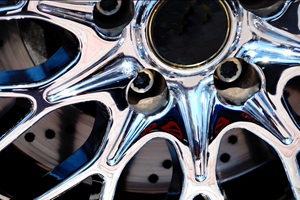Plating Q&A: Diminishing Plating Thickness
The brightness of our parts slowly degrades every week.
Q. We run an alkaline non-cyanide zinc bath, and the brightness of our parts slowly degrades every week. Also, our plating thickness is diminishing without adjusting time, temperature, current density, or any generic ingredients such as zinc and sodium hydroxide. Why is this occurring?
A. The conditioner or replenisher component can be analyzed via atomic absorption spectroscopy or inductively coupled plasma spectroscopy.
Carriers (also called “base” or “initial”) improve deposit distribution (throwing power), pitting and HCD burning; too much reduces plating efficiency, plating rate and dullness. The brightener component refines the deposit appearance, but too much will hurt the efficiency and adhesion.
We had a similar issue with a customer, and we ran the tests mentioned above. To determine the source of the dullness and thickness disparities, we ran three different Hull cell panels without agitation using fresh solution. The first panel did not exhibit any burn or nodulation because of zinc hydroxide precipitation along the far left (HCD) area, possibly indicating too much carrier. A light burn means the carrier concentration is within range, and too much burning is an indication of low carrier.
The next panel was clear and bright from left to right (HCD to LCD) with no burning in the high or dullness in the low. We did not experience any issues with burning or LCD dullness with our 3-amp panel, indicating at least a sufficient amount of both components, but there was some dullness on the panel itself, indicating high carrier.
The last 1-amp panel was a little dull, indicating an excess of carrier or a lack of brightener. This panel should also be full bright, and special attention should be paid to the LCD area. Any dullness indicates you may be low in both or either component. Our LCD maintained its clarity and brightness, indicating at least a sufficient amount of carrier and brightener.
The results of the qualitative analysis indicate that the bath might be high in proprietary organics (carrier and/or brightener), so we ran a 1-amp panel in a Hull cell without agitation. The temperature was maintained at 75°F because higher temperatures will give you slightly better throwing power or deposit distribution, which will interfere with the procedure. Lower temperatures will give you slightly worse deposit distribution. We marked the panel with a Hull cell ruler at the 40, 20 and 5 ASF areas. The actual microns or mils of thickness at these markings differ depending on the system, but many comport to the following thicknesses:
40 ASF (HCD) = 3.5–4.5 microns (0.14–0.17 mils)
20 ASF (MCD) = 3.0–4.0 microns (0.12–0.16 mils)
5 ASF (LCD) = 2.8–3.2 microns (0.11–0.13 mils)
The zinc thickness on our customer’s bath at all three marks was low, indicating high brightener, but we also encountered an extreme degree of thickness uniformity, indicating too much carrier. The plating thickness ratio was a lower range than is given for a well-operating bath. A poor thickness ratio and low thicknesses at all marked densities indicated the bath had too much carrier and brightener.
Because the dullness and the plating rate were due to a highly saturated bath overloaded with proprietary organics, we had our customer gradually taper off the pump speed and volume of these products in 5 and 10 percent increments. Within a few weeks, our customer saw major improvements in all three problem areas.
Adam Blakeley is a technical service representative for MacDermid. Contact him at adam.blakeley@macdermid.com.
Originally published in the March 2016 issue.
Related Content
Innovation in Plating on Plastic
Plating on advanced plastics solution offers improved adhesion, temperature resistance and cost savings.
Read MoreProducts Finishing Reveals 2024 Qualifying Top Shops
PF reveals the qualifying shops in its annual Top Shops Benchmarking Survey — a program designed to offer shops insights into their overall performance in the industry.
Read MoreLiquid Chrome Vs. Chromic Acid Flake
Contemplating how to continue offering chromic acid services in an increasingly stringent regulatory world? Liquid chrome products may be the solution you’re looking for.
Read MoreA Chromium Plating Overview
An overview of decorative and hard chromium electroplating processes.
Read MoreRead Next
Education Bringing Cleaning to Machining
Debuting new speakers and cleaning technology content during this half-day workshop co-located with IMTS 2024.
Read MoreDelivering Increased Benefits to Greenhouse Films
Baystar's Borstar technology is helping customers deliver better, more reliable production methods to greenhouse agriculture.
Read MoreEpisode 45: An Interview with Chandler Mancuso, MacDermid Envio Solutions
Chandler Mancuso, technical director with MacDermid Envio discusses updating your wastewater treatment system and implementing materials recycling solutions to increase efficiencies, control costs and reduce environmental impact.
Read More

















.jpg;maxWidth=300;quality=90)







